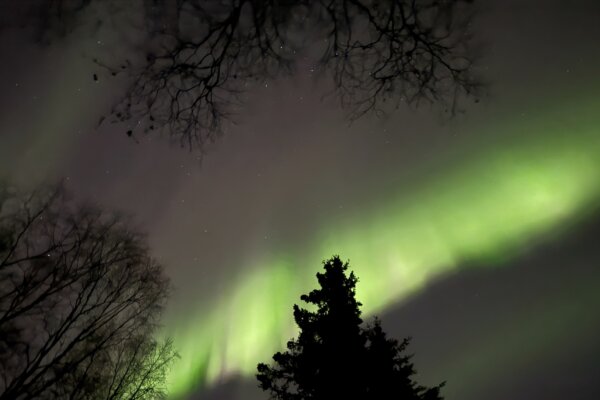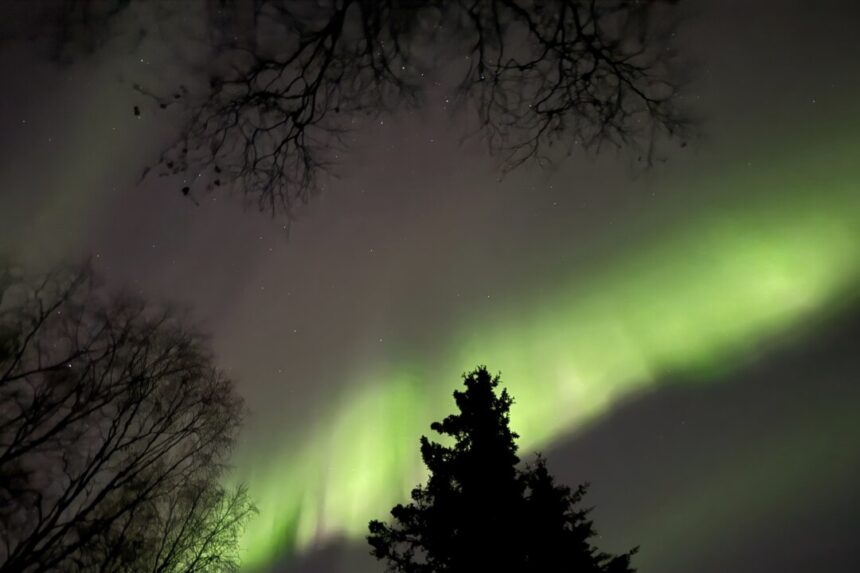
This Thanksgiving, there is a possibility of faint auroras appearing across the northern part of the United States due to solar storms.
Pale auroras may be visible in several northern states on Thursday and Friday, but their visibility will depend on the intensity of the solar storms, as mentioned by NOAA meteorologist Mike Bettwy.
The states best positioned to potentially see auroras include Washington, Montana, the Dakotas, Minnesota, Wisconsin, Michigan, and Maine. Parts of Idaho, Wyoming, New York, Vermont, and New Hampshire may also witness the auroras.
Experts suggest that auroras could be seen from 10 p.m. ET on Thursday to 1 a.m. ET on Friday, although the exact timing is uncertain. Updated forecasts can be found on NOAA’s Space Weather Prediction Center website or an aurora forecasting app as the event approaches.
To catch a glimpse of the auroras, wait for clear and dark skies, away from city lights. Using a smartphone camera may help capture the auroras that may not be visible to the naked eye.
Currently, the sun is at the peak of its 11-year cycle, resulting in more frequent solar surges and northern lights. Earlier this week, a burst of high-energy plasma was directed towards Earth.
This active period is expected to continue for at least another year, with the exact peak of solar activity being determined months later by NASA and NOAA.
While this week’s solar storm is not expected to cause major communication disruptions, in May, NOAA issued a rare severe geomagnetic storm warning, the strongest in over two decades. Last month, a powerful solar storm led to stunning auroras appearing in unexpected locations such as Germany, the United Kingdom, New England, and even New York City.
By Adithi Ramakrishnan





